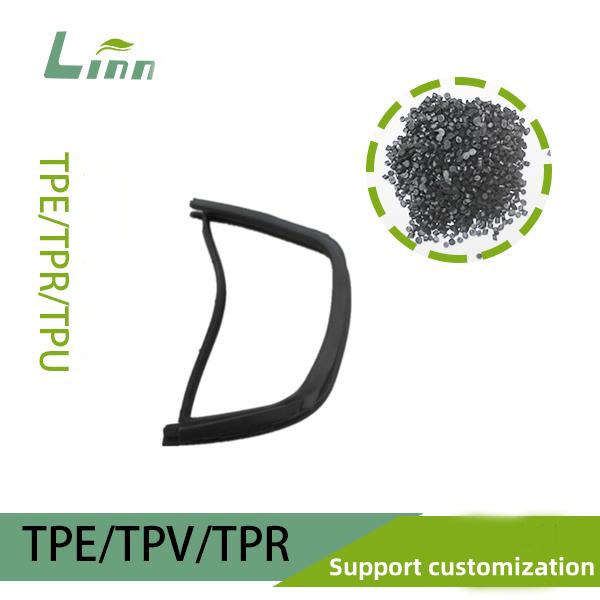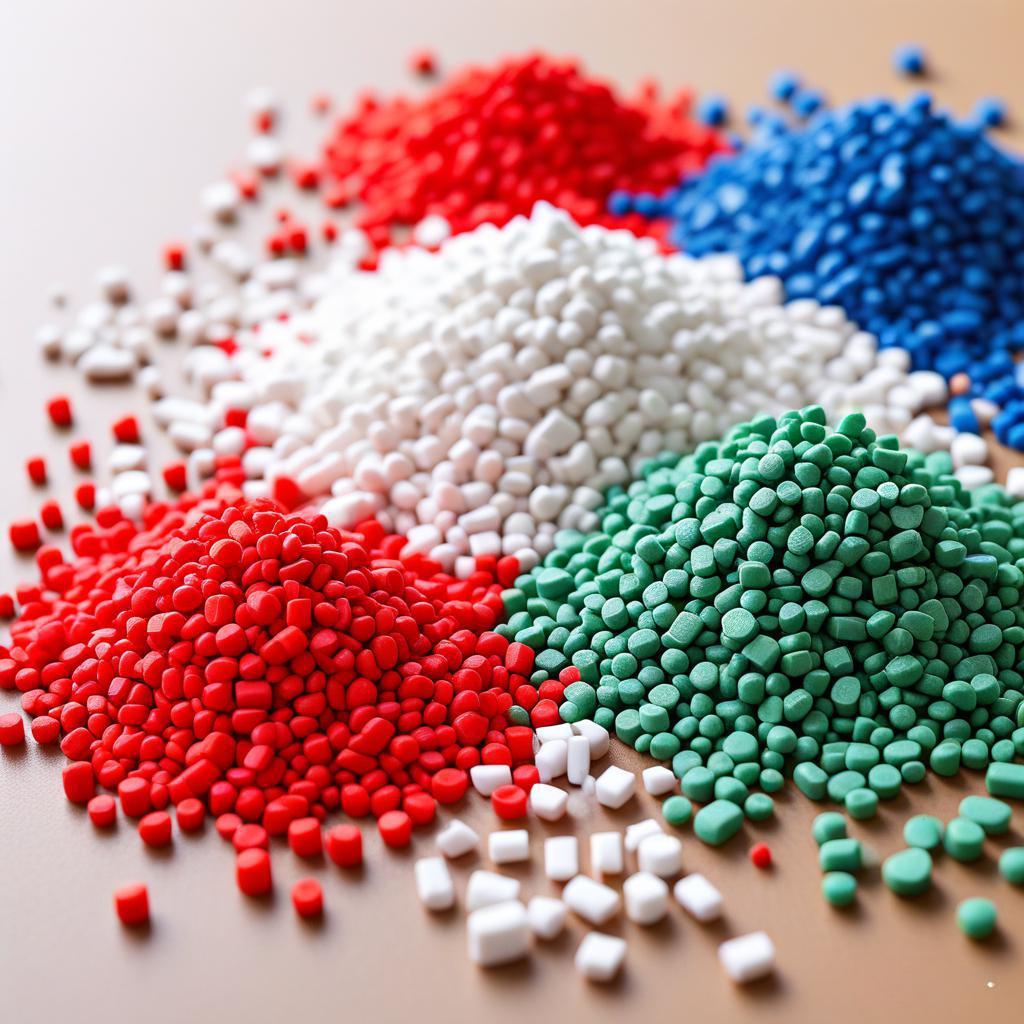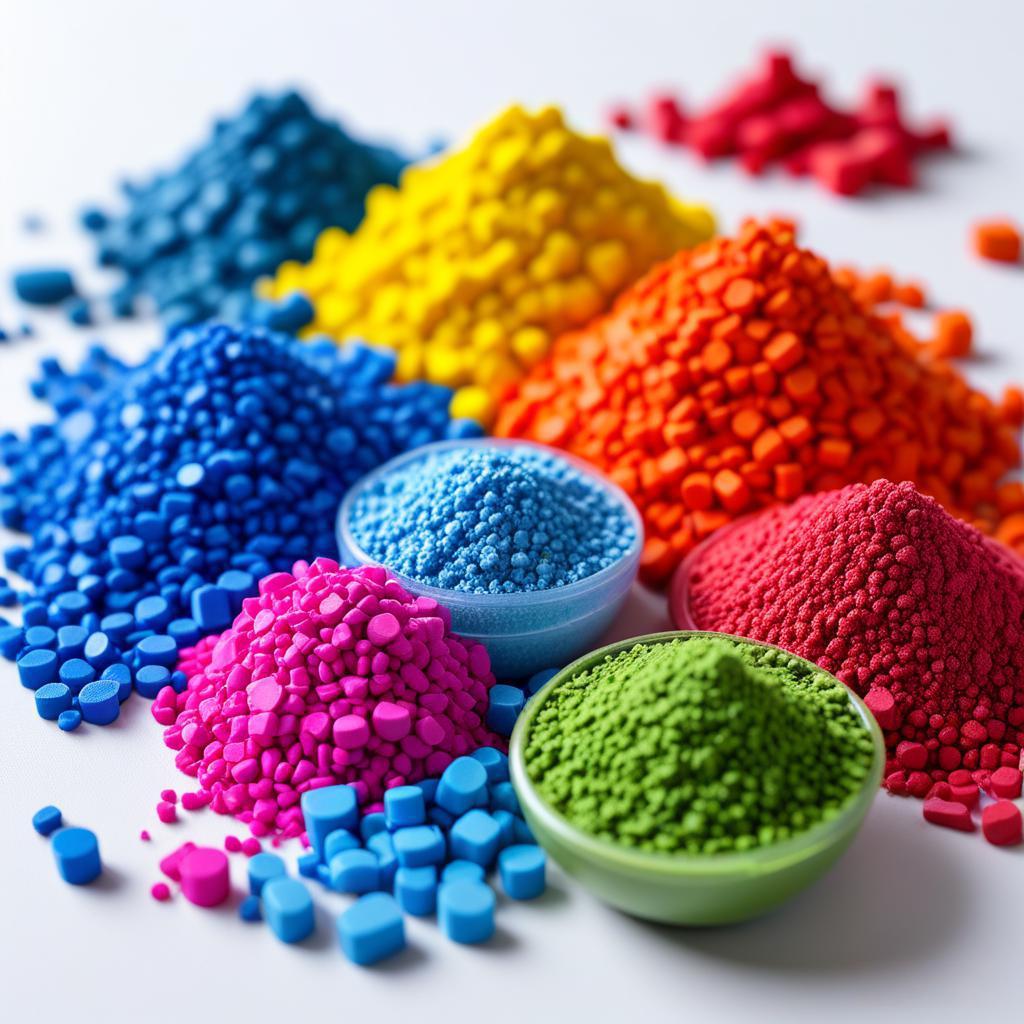As someone who’s spent years navigating the world of high-polymer materials, I’ve come across countless questions about how materials like thermoplastic elastomers (TPE) are used—or not used—in specific applications. One question that keeps popping up is: “Why don’t we see medical gloves made from TPE?” It’s a great question, especially since TPE is flexible, eco-friendly, and widely used in other medical devices like tubing and seals. In this article, I’ll dive deep into the reasons behind this, drawing on my experience in the industry to explain the science, regulations, and practical challenges involved. My goal is to give you a clear, human perspective on why TPE hasn’t made it into medical gloves and what materials dominate instead.

A Quick Look at Medical Gloves and Their Role
Before we tackle TPE, let’s set the context. Medical gloves are critical in healthcare, protecting both patients and professionals from infections, chemicals, and contaminants. Whether in surgery, examinations, or dental work, gloves must meet strict standards for safety, comfort, and performance. Common materials include:
Nitrile: Durable, chemical-resistant, and latex-free.
Latex: Naturally elastic and comfortable but allergenic for some.
Vinyl (PVC): Cost-effective but less stretchy.
TPE, known for its rubber-like elasticity and recyclability, seems like a natural candidate. It’s already used in medical applications like catheters, IV bags, and syringe seals, so why not gloves? Let’s explore the reasons, step by step.
Why TPE Isn’t Used for Medical Gloves
From my time working with manufacturers and hospitals, I’ve learned that material choices for medical gloves are driven by a mix of performance, cost, and regulatory factors. Here’s why TPE hasn’t cracked this market.
1. Insufficient Barrier Properties for Infection Control
Medical gloves are a frontline defense against pathogens, including bacteria, viruses, and bloodborne agents like HIV or hepatitis. Standards like ASTM D3578 for latex gloves and ASTM D6319 for nitrile gloves set strict requirements for barrier performance, measured by tests like water leak or viral penetration resistance.
TPE, while flexible and strong, often falls short in film integrity when stretched thin. Gloves need to be 0.05-0.1 mm thick to balance protection and dexterity, but TPE films at this thickness can develop microtears or pinholes under stress. I’ve seen TPE perform well in thicker applications like tubing, but for gloves, it struggles to match nitrile’s or latex’s ability to maintain a reliable barrier during prolonged use, like in surgery.
I once consulted on a project where a client explored TPE for disposable gloves. Lab tests showed that while TPE passed basic tensile strength, it failed viral penetration tests when stretched repeatedly—unlike nitrile, which held up consistently. TPE’s barrier limitations make it risky for gloves where infection control is paramount.
2. Lack of Elastic Recovery for a Snug Fit
Medical gloves need to conform tightly to the hand for precision and comfort, especially during delicate procedures like suturing. Materials like latex and nitrile excel here because they have high elastic recovery, meaning they snap back to their original shape after stretching.
TPE, while elastic, often exhibits stress relaxation—it loses some tightness over time when stretched. Imagine wearing a glove for an hour-long surgery; a TPE glove might start to feel loose, reducing dexterity. In my experience, TPE’s modulus of elasticity (its “springiness”) is lower than latex or nitrile, making it less ideal for applications requiring a second-skin fit.
I recall a trial where we tested TPE films for glove-like applications. The material felt great initially but bagged slightly after 30 minutes of wear, unlike nitrile, which stayed snug. TPE’s elastic properties just don’t compete with the gold standards for gloves.

3. Challenges in Thin-Film Manufacturing
Producing medical gloves involves dip-molding or extrusion to create ultra-thin, uniform films. Nitrile and latex are well-suited for this because their polymer solutions (latex sap or nitrile compounds) flow evenly and cure into strong, flexible films. PVC, used in vinyl gloves, also adapts well to calendaring or dipping processes.
TPE, however, is trickier to process into thin films. Its melt-flow characteristics require higher temperatures and precise control to avoid defects like uneven thickness or weak spots. In one factory I visited, attempts to dip-mold TPE gloves resulted in inconsistent films—some areas were too thick, others too brittle. Scaling this to mass production while meeting EN 455 standards for medical gloves proved impractical compared to established nitrile or latex lines.
TPE’s manufacturing challenges increase costs and defect rates, making it less viable for gloves where precision is critical.
4. Regulatory and Certification Hurdles
Medical gloves are Class I medical devices under FDA regulations and similar frameworks like the EU’s MDR 2017/745. They must pass rigorous tests for biocompatibility, sterility, and performance. Nitrile, latex, and vinyl have decades of data backing their safety and efficacy, streamlining their approval.
TPE, while biocompatible in many forms (e.g., for tubing), lacks a robust track record for gloves. Introducing TPE gloves would require extensive testing—think cytotoxicity, sensitization, and irritation studies per ISO 10993—plus glove-specific performance tests. This process is costly and time-consuming, deterring manufacturers when proven materials already dominate.
I worked with a startup exploring TPE for medical applications. They pivoted away from gloves after learning the certification timeline could exceed two years, compared to months for tweaking a nitrile formula. Regulatory barriers make TPE a tough sell for gloves.
5. Cost and Market Competition
Medical gloves are a high-volume, low-margin product, with global demand soaring since the COVID-19 pandemic. Nitrile gloves, for instance, benefit from economies of scale, with massive production in countries like Malaysia and Thailand. Latex and vinyl also have mature supply chains, keeping costs low.
TPE gloves, if developed, would face higher production costs due to specialized formulations and processing challenges. Plus, TPE’s raw materials—like SEBS or TPU—can be pricier than nitrile or PVC in bulk. In a price-sensitive market where hospitals buy gloves by the millions, TPE would struggle to compete with nitrile’s $0.05-$0.10 per pair benchmark.
I saw this dynamic play out when a client considered TPE for a niche glove product. The projected cost per pair was 20% higher than nitrile, and buyers weren’t willing to pay a premium for TPE’s eco-friendly appeal. Cost competitiveness keeps TPE out of the glove market.

6. Tactile Sensitivity and Durability Concerns
Surgeons and nurses rely on gloves for tactile sensitivity—the ability to feel instruments or tissues through the material. Latex is prized for its natural feel, while nitrile has improved to rival it. TPE, while soft, often feels less responsive at glove thicknesses due to its molecular structure, which balances elasticity with toughness.
Durability is another issue. Gloves face punctures, tears, and chemical exposure (e.g., disinfectants). Nitrile’s cross-linked polymer network resists these better than TPE, which can soften or degrade under certain solvents. I’ve tested TPE films in labs and found they’re less robust against alcohols or oils compared to nitrile, a dealbreaker for gloves.
TPE’s tactile and durability limits make it less appealing for medical gloves, where reliability is non-negotiable.
Comparing Glove Materials: Where TPE Stands
To clarify why TPE lags behind, here’s a table comparing key properties of glove materials, based on my industry knowledge.
| Property | Nitrile | Latex | Vinyl (PVC) | TPE (Hypothetical) |
|---|---|---|---|---|
| Barrier Protection | Excellent; passes viral penetration tests. | Excellent; natural barrier but allergenic. | Good; weaker against some chemicals. | Moderate; risks microtears when thin. |
| Elasticity | High; snug fit, good recovery. | Superior; best fit and stretch. | Low; less stretchy, looser fit. | Moderate; loses tightness over time. |
| Tactile Sensitivity | Very good; close to latex. | Excellent; gold standard for feel. | Poor; feels bulky. | Moderate; less responsive than nitrile. |
| Durability | High; resists punctures, chemicals. | High; but can degrade with oils. | Moderate; prone to tears. | Moderate; weaker against solvents. |
| Processing | Mature; dip-molding optimized. | Simple; natural sap easy to process. | Cost-effective; suits mass production. | Challenging; thin films hard to perfect. |
| Cost per Pair | Low ($0.05-$0.10). | Moderate ($0.08-$0.15). | Very low ($0.03-$0.08). | Likely higher ($0.10-$0.20, estimated). |
| Regulatory Status | Well-established; FDA/EU approved. | Approved; allergy concerns limit use. | Approved; limited for high-risk tasks. | Untested for gloves; needs new approvals. |
This table shows why nitrile, latex, and vinyl dominate—TPE’s trade-offs in protection, fit, and cost outweigh its strengths for gloves.
Could TPE Ever Be Used for Medical Gloves?
While TPE isn’t a go-to for medical gloves today, could it be in the future? I think it’s possible, but it hinges on overcoming current limitations. Here’s what would need to happen:
Improved Formulations: Develop TPE blends with better barrier properties and elastic recovery, perhaps by tweaking soft segments or adding cross-linking agents. I’ve seen R&D in this area, but it’s still early.

Advanced Manufacturing: Innovate thin-film processing to make TPE gloves reliably at scale, reducing defects and costs. New dipping or blowing techniques could help.
Regulatory Support: Build a data backlog for TPE gloves through biocompatibility and performance testing, convincing regulators like the FDA or CE of their safety.
Market Demand: Create a niche for TPE gloves, perhaps for low-risk settings (e.g., non-sterile exams) or eco-conscious buyers willing to pay a premium.
I’ve spoken with researchers exploring TPE for sustainable gloves, but they admit nitrile’s dominance and low cost make it a tough sell. Still, as sustainability grows in healthcare, TPE’s recyclability could give it a foothold someday.
Practical Advice for Choosing Medical Gloves
If you’re wondering about glove materials for your practice or project, here’s my advice based on years of material selection:
1. Prioritize Performance
Choose gloves based on the task. Nitrile is best for high-risk settings like surgery or chemo handling. Latex suits precision work if allergies aren’t a concern. Vinyl works for low-risk, short-term use like food prep. TPE, for now, isn’t an option but shines in other medical products.
2. Check Certifications
Ensure gloves meet standards like ASTM, EN 455, or ISO 11193. Look for FDA 510(k) clearance or CE marking to confirm quality. TPE would need these for gloves, but current materials are already vetted.
3. Balance Cost and Quality
Nitrile is pricier than vinyl but worth it for protection. Latex can be cost-effective but risks allergies. If budget is tight, vinyl is cheapest, though less durable. TPE gloves, if they existed, might cost more due to production hurdles.
4. Consider Sustainability
If eco-friendliness matters, explore nitrile gloves from manufacturers with recycling programs. TPE’s green appeal is strong elsewhere (e.g., tubing), but gloves need proven performance first.
5. Stay Informed
Keep an eye on material innovations. TPE could emerge for gloves as technology advances, especially in non-medical or hybrid applications. I follow journals like Medical Plastics News to stay updated.

Real-World Insights: Gloves in Action
To ground this, let me share two experiences that highlight why glove materials matter.
Case 1: Hospital Nitrile Switch
A hospital I advised switched from latex to nitrile gloves after allergy complaints from staff. They considered TPE-like materials for their flexibility but found no glove-grade options that met ASTM D6319 for barrier strength. Nitrile’s reliability and cost won out, reinforcing why TPE isn’t ready for gloves.
Case 2: Surgical Precision Needs
A surgeon friend once explained why latex gloves were his go-to for complex procedures—nothing matched their tactile feedback. We discussed TPE as a hypothetical alternative, but its looser fit and unproven status ruled it out. Nitrile was the closest runner-up, showing how glove materials are chosen for real-world demands.
These stories underline that material choice for gloves is about trust and performance, areas where TPE hasn’t yet proven itself.
Common Questions About TPE and Medical Gloves
Here are answers to questions I often hear, based on my work in the field.
1. Can TPE be used for any gloves at all?
Yes, TPE is used in industrial or household gloves (e.g., cleaning or food prep), where standards are less strict. But medical gloves need higher barrier and fit standards, which TPE doesn’t meet.
2. Why is nitrile so popular for medical gloves?
Nitrile offers excellent protection, chemical resistance, and latex-free benefits at a competitive price, backed by decades of testing and production efficiency.
3. Are latex allergies the only reason to avoid latex gloves?
No, latex also degrades with oils and some chemicals, unlike nitrile. But its comfort keeps it popular where allergies aren’t an issue.
4. Could TPE gloves be cheaper than nitrile?
Unlikely. TPE’s processing challenges and certification costs would likely make it pricier than nitrile’s $0.05-$0.10 per pair in bulk.
5. Will TPE ever replace nitrile or latex for gloves?
Maybe in niche markets, like eco-friendly exam gloves, but it needs better barrier properties and cost reductions to compete broadly.
Wrapping Up
The question “Why aren’t medical gloves made of TPE?” boils down to a mix of science and practicality. TPE’s flexibility and green credentials are impressive, but its barrier weaknesses, elasticity limits, manufacturing hurdles, and regulatory gaps keep it out of the glove game. Nitrile, latex, and vinyl dominate because they’ve proven their worth in protection, comfort, and cost—qualities medical gloves can’t compromise.
If you’re curious about glove materials, exploring medical device options, or wondering about TPE’s potential, I’m here to help. Share your thoughts, and I’ll offer insights from my years in the field. In the world of medical polymers, every choice counts, and I’m excited to guide you through it.
